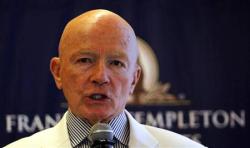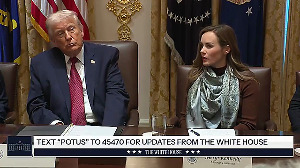Veteran emerging markets investor Mark Mobius sees a bumper year ahead for riskier, high-yielding assets as hundreds of billions of dollars flows off bank balance sheets and back into markets. While banks had so far used ample central bank liquidity to bolster balance sheets and buy safe-haven US Treasuries, Mobius told Reuters that sentiment was turning towards greater risk appetite.
While banks had so far used ample central bank liquidity to bolster balance sheets and buy safe-haven US Treasuries, Mobius told Reuters that sentiment was turning towards greater risk appetite.
"I think this year is going to be a very big year because there's a lot of money that's sloshing around," the executive chairman of fund manager Franklin Templeton's emerging markets group said in a telephone interview.
"Now that's beginning to find its way into the markets so you can expect a bigger end impact from this pile that's been building up for the last two years."
Emerging market stocks, Mobius's specialty, have been a roller coaster ride since the financial crisis: the MSCI emerging stock index surged back nearly 75 percent in 2009, gained 16 percent in 2010 and slumped 20 percent in 2011.
Although the index rose over 15 percent last year, it is still about 20 percent below its 2007 all-time high.
For 2013, Mobius - who helps oversee $51 billion in emerging market funds - likes Africa for its rapid growth, consumer-linked sectors in Latin America and small to mid-cap companies in emerging markets in general.
"An interesting aspect now is the move for many managers to go for smaller and medium cap companies," he said. "In all emerging markets, including for Mexico and Brazil, people are looking down the list to the smaller companies to seize opportunities."
Mobius's $2.4 billion Templeton Developing Markets Trust lagged the average of diversified emerging market funds in 2012,
Over the last year, the fund has eased back on Brazilian assets, with their weighting falling from 21 percent at end-2011 to 19 percent at end-2012. It has also pulled back on Mexico but holdings in China and Indonesia have increased.
In Latin America, Mobius was looking at consumer-related sectors such as banking and telecommunications, and saw little difference in valuations between Brazilian and Mexican stocks.
Foreign investors piled into Mexico last year amid optimism about reforms promised by its new government, pushing the benchmark stock index up nearly 18 percent.
The gauge has gained another 4 percent this year to trade at record highs. Brazil's Bovespa rose just over 7 percent in 2012 while Colombia's main index gained 16 percent.
"In Mexico what will be needed, what is needed, is more issuance, more IPO deals and I think that's where you'll see opportunities going forward," Mobius said.
Mexico notched a record $8.7 billion of new share listings in 2012, according to Thomson Reuters' IFR, helped by Spanish bank Santander's $4.1 billion float of a stake in its Mexican operations.
Mobius expected very rapid growth in Sub-Saharan and Northern Africa and said he was still bullish on Egyptian stocks despite a sharp weakening in the currency.
"You can have equity prices move up while the currency moves down, so some companies will benefit from the weaker currency," he said.
Egyptian stocks have dropped 3 percent in the past week but remain 45 percent higher than the same time last year after one of the world's best stock market performances of 2012.











